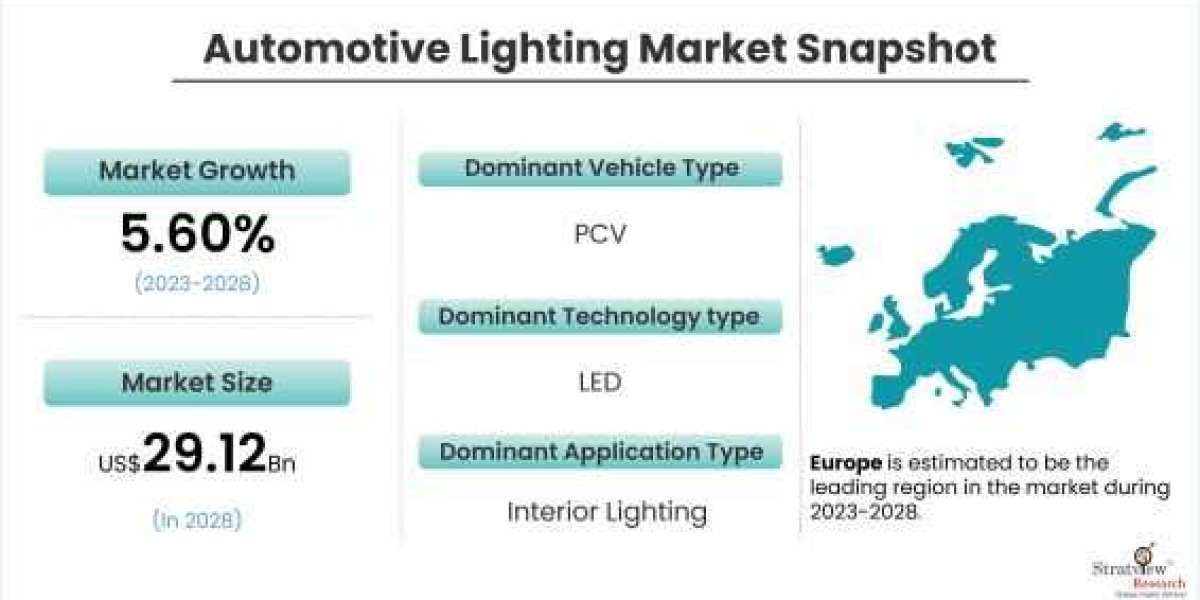Introduction
The lighting system of an automobile incorporates lighting and signaling devices usually present in the front, rear, side, or interior of the vehicle. Automotive lights are an integral part of a motor vehicle majorly utilized in the automotive industry to enhance the visibility of the vehicle.
The automotive lighting market is estimated to grow from USD 20.94 billion in 2022 to USD 29.12 billion by 2028 at a CAGR of 5.60% during the forecast period.
The automotive lighting market is experiencing rapid growth, driven by advancements in technology, increasing demand for energy efficiency, and evolving consumer preferences. As the automotive industry shifts towards electric and autonomous vehicles, the role of lighting has expanded beyond mere illumination, becoming integral to vehicle safety, aesthetics, and functionality.
Key Trends and Drivers
One of the most significant trends in the automotive lighting market is the transition from traditional halogen and xenon lights to LED and laser-based systems. LED lighting, in particular, has gained popularity due to its energy efficiency, longer lifespan, and superior illumination. Laser headlights, although still in the early stages of adoption, offer even greater brightness and range, making them ideal for high-end vehicles.
Another key driver is the growing emphasis on safety. Advanced driver assistance systems (ADAS) are increasingly incorporating intelligent lighting solutions, such as adaptive headlights that adjust their beam patterns based on driving conditions, and matrix LED systems that can selectively dim certain areas to avoid blinding other drivers. These innovations not only enhance visibility but also contribute to the overall safety of both drivers and pedestrians.
Aesthetic Appeal and Customization
In addition to safety and efficiency, aesthetic appeal plays a crucial role in the automotive lighting market. Manufacturers are leveraging lighting to create distinctive vehicle designs, offering customizable options such as dynamic lighting effects, ambient interior lighting, and illuminated logos. These features allow carmakers to differentiate their brands and cater to the growing consumer demand for personalized vehicles.
The rise of electric vehicles (EVs) has further accelerated the adoption of advanced lighting technologies. With fewer mechanical constraints, EV designs often incorporate futuristic lighting elements, such as light bars that span the width of the vehicle and innovative lighting signatures that enhance brand identity.
Challenges and Opportunities
Despite the promising outlook, the automotive lighting market faces several challenges. The high cost of advanced lighting systems, especially laser headlights, may limit their adoption to premium vehicles in the short term. Additionally, regulatory variations across regions can complicate the deployment of new lighting technologies.
However, these challenges also present opportunities for innovation. As technology matures and economies of scale are achieved, the cost of advanced lighting systems is expected to decrease, making them accessible to a broader range of vehicles. Moreover, the integration of lighting with other vehicle systems, such as sensors and cameras, could lead to new functionalities and further enhance vehicle safety and performance.
Conclusion
The automotive lighting market is poised for significant growth, driven by technological advancements, safety considerations, and consumer demand for customization. As the industry continues to evolve, lighting will play an increasingly important role in defining the future of mobility.
To know more about the market dynamics, Register Here: https://www.stratviewresearch.com/Request-Sample/1803/automotive-lighting-market.html#form








